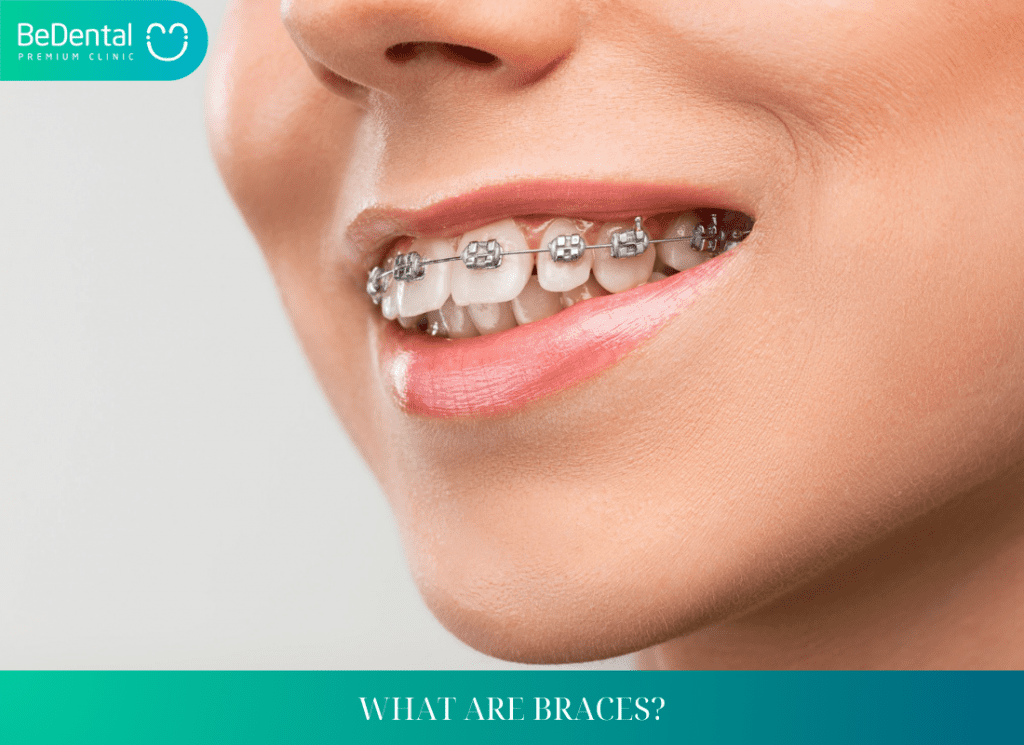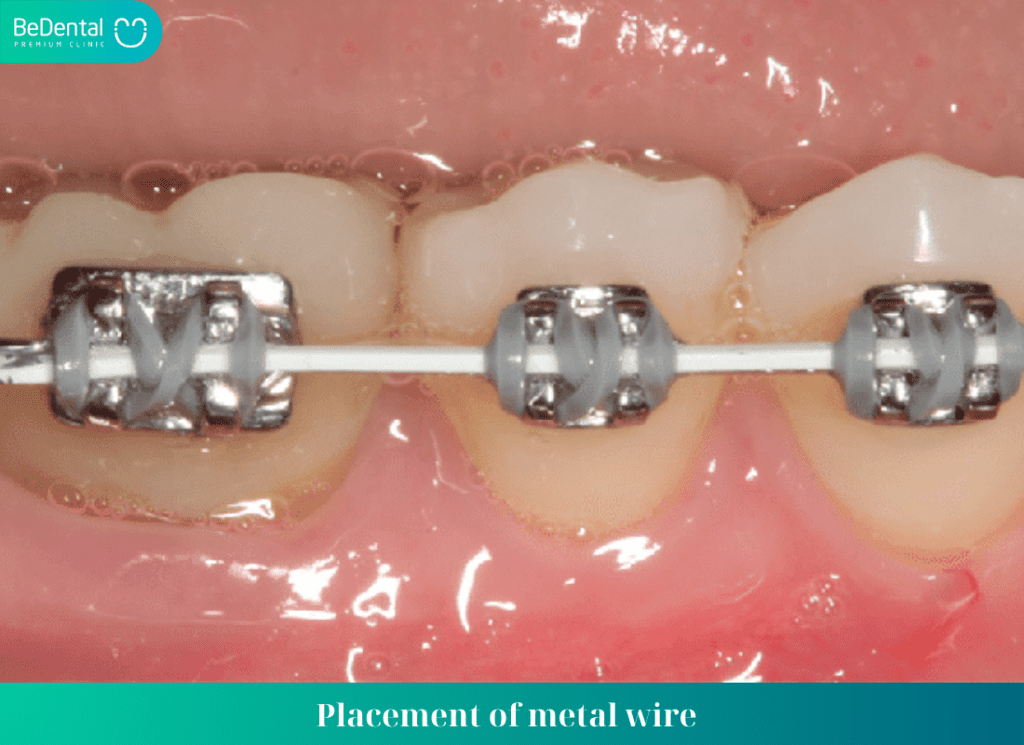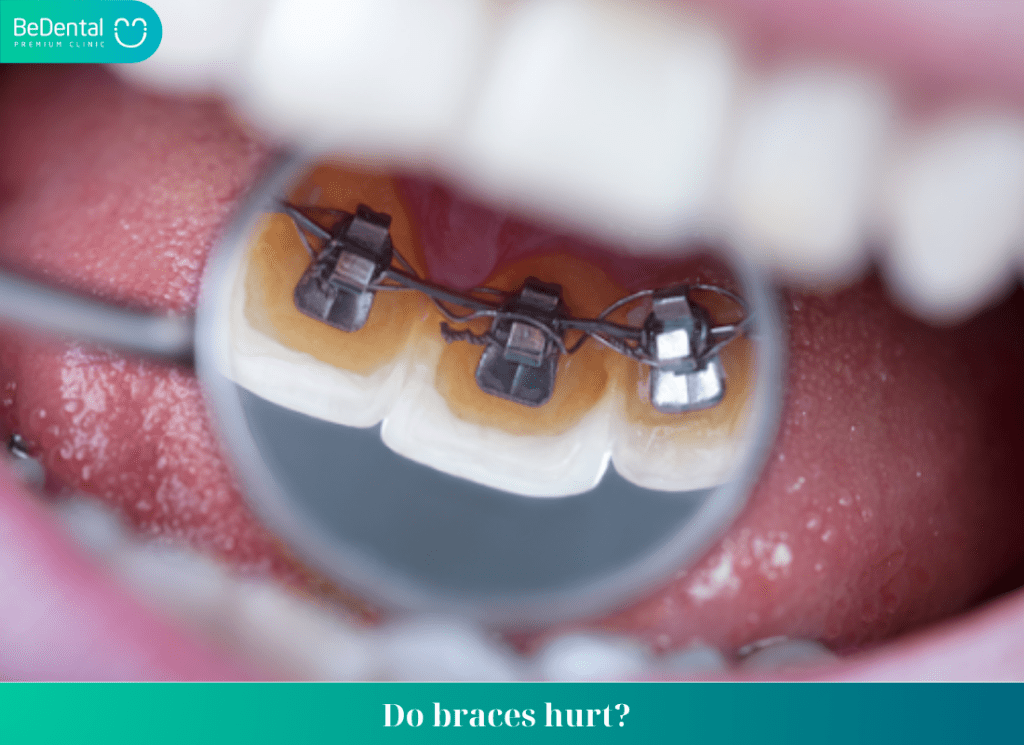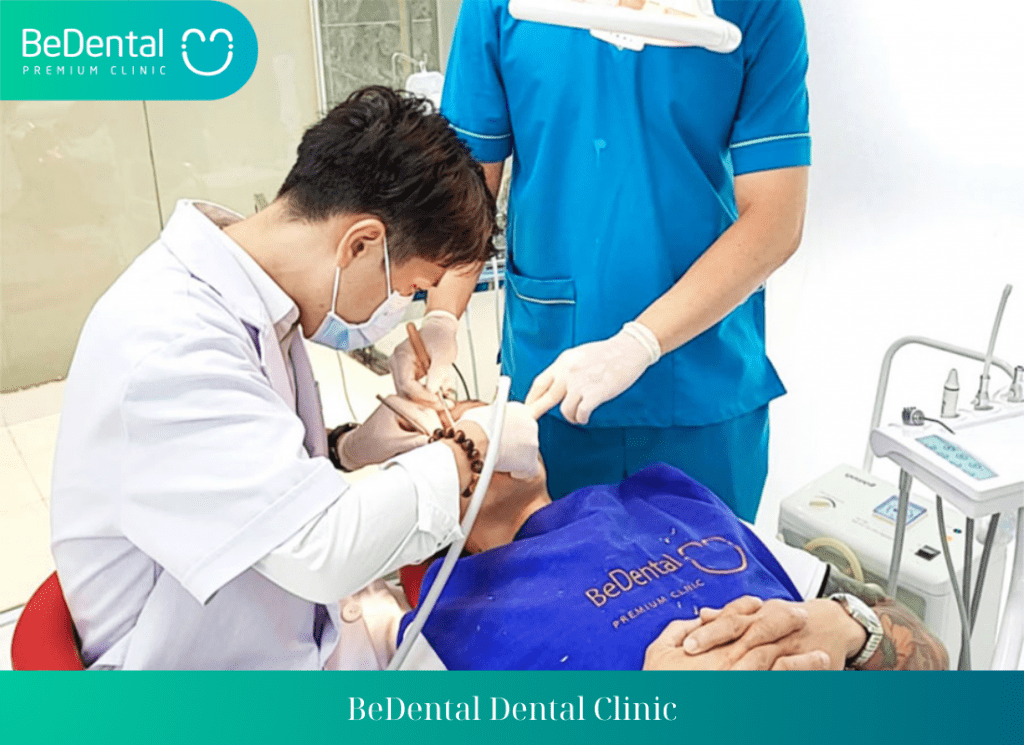Does getting braces hurt? Which stage is the most painful? Braces are a method to help you achieve a straight and even set of teeth as desired. However, many people still wonder if getting braces hurts and have a fear of pain during the process. So, Does getting braces hurt? When is the most painful time during the braces process?
What are braces?
Besides the question “Does getting braces hurt?”, another common concern is “What are braces?”. Crooked, misaligned, uneven teeth often affect the facial appearance. Nowadays, to correct this, people often get braces using dental appliances to achieve a beautiful set of even teeth.

Here are some conditions a dentist advises you to get braces for:
- Overbite, underbite
- Crowded teeth
- Misaligned bite
- Protruding teeth
Braces not only help you have a neat and even set of teeth but also serve other purposes like making chewing easier, reducing pressure on the jawbone, helping you have even, beautiful teeth in the future.
See more: Extracting teeth before getting braces
Are braces safe?
Besides the question “Does it hurt to get braces on?“, another common concern is “Are braces safe?”. Braces are a complex process that requires the expertise and experience of dental professionals. If carried out correctly and under the supervision of dental professionals, the braces process is a safe and effective method to improve your appearance and oral health.
However, there are some risks and certain side effects. For example, braces may cause pain and soreness when first applied, but this discomfort will decrease over time and can be alleviated with pain medication. Some people may have metal allergies from braces or serious oral issues, in which case getting braces is not suitable and needs to be carefully considered
Other risks may include tooth loss due to infection and complications of braces such as foreign objects in the teeth, pain and swelling when adjusting teeth alignment, teeth not returning to their original position after removal.
Popular braces methods nowadays
Currently, there are many popular braces methods, but dentists will recommend the most suitable method based on the condition of your teeth and your needs:
Metal braces
This is the earliest method, providing relatively high effectiveness and is chosen by many due to its low cost. However, the aesthetics of this type of braces are not highly regarded and can be inconvenient to use.

Steps for metal braces
Besides the question “Does getting braces hurt?”, another common concern is steps for metal braces. This is a long process that requires patience and commitment. Here are the basic steps in the process of metal braces:
- Examination and evaluation: The next step is the examination and evaluation by the dentist to determine if you are suitable for braces. The dentist will assess the condition of your teeth, review images, and take measurements to plan the treatment.
- Making cushioning pads: During the braces process, cushioning pads will be placed on your teeth to ensure that the metal wire does not damage your teeth and gums.
- Placement of metal wire: After the cushioning pads are placed, the dentist will attach the metal wires to the pads and adjust them to fit the position of each tooth. The metal wires are attached with brackets or connectors on each tooth.

- Adjusting metal wire: Throughout the treatment process, the dentist will continuously adjust the metal wires to bring your teeth back to their original positions.
- Tooth extraction: If the dentist determines that a tooth needs to be braced, it should be removed to make space for other teeth to move.
- Dental care: You should regularly clean your teeth and metal wires with toothpaste and use mouthwash to prevent bacteria and plaque buildup.
See more: Why do children have bad breath
Ceramic braces
This method is similar to the metal bracket method, but it is more aesthetically pleasing and more expensive than the methods mentioned above.
Self-ligating braces
This system uses a sliding mechanism instead of rubber bands to secure the archwire and brackets, ensuring a continuous orthodontic adjustment process.
Does getting braces hurt?
Does it hurt when you get braces? or does it hurt to get braces tightened? Braces involve using dental appliances to move teeth back to their correct positions on the dental arch, keeping teeth straight and aligned. When the wires pull on the teeth, it can create friction that causes slight discomfort.

The average process of wearing braces takes about 1.5-2 years, and there will be stages where you will experience various levels of discomfort and sensitivity. Specifically:
- Separation of teeth: This is a preparation step before putting on braces. The purpose of separating teeth is to create space between them to allow the teeth to move during the braces process. After separation, you may feel toothaches, discomfort, or even pain while eating. However, this sensation will gradually disappear.
- 1 week after wearing braces: On the first day of wearing braces, some people are excited, while others worry about whether it will hurt. This is understandable, as the mouth is not yet used to the new braces, so eating, chewing, and speaking may feel awkward, uncomfortable, or have a hard lump.
See more: The process of root canal treatment
- Moving teeth through extracted gaps: This is the most dreaded stage for many people. However, this pain is not as severe or terrifying as rumored. This pain is within everyone’s tolerance threshold.
- Regular Tooth Adjustment: When you visit the dentist to check the tooth movement, the dentist will tighten your teeth to move them back to their original positions.
How to reduce toothaches when wearing braces?
Besides the question “Does getting braces hurt?”, another common concern is “How to reduce toothaches when wearing braces?”. Wearing braces is a time-consuming process and can cause some difficulties, such as toothaches. Here are some methods to reduce toothaches when wearing braces:
- Use pain relievers: You can use pain relievers like Paracetamol or Ibuprofen to reduce pain and toothaches. However, you should consult with your dentist before using medication.
- Use saltwater: Rinsing with diluted saltwater can help reduce pain and soothe any injuries to the teeth and gums.
- Use black orthodontic wax: You should use black orthodontic wax to wrap around the braces brackets to help reduce pressure on the teeth and alleviate pain.

To minimize discomfort when wearing braces, patients should research and ask the dentist: “Does getting braces hurt?” if the team of doctors and facilities are done correctly:
See more: What is teeth tightening during braces?
BeDental was established in 2012, and after a period of operation, the center has quickly become a customer service address with reputable dental services and is one of the leading dental clinics in the field of dentistry.

With a team of experts, experienced doctors, advanced equipment, and a modern technical team, Bedental has taken firm steps on the path to becoming a cosmetic dentistry center in Vietnam.
BeDental is committed to becoming a leading unit in the field of cosmetic dentistry, especially in porcelain dental restoration in Vietnam, with a strategy focused on developing high technology, updating trends, and modern artistic techniques.
Who should not wear braces
Although wearing braces is an effective method to improve tooth alignment and enhance smiles, not everyone is suitable for this method. Here are some cases to avoid wearing braces:
- Children under 12 years old: Children need to wait until all baby teeth have completely fallen out and permanent teeth have grown back before wearing braces. Children with teeth still developing may be affected by wearing braces.
- People with dental health issues: If you have issues with gums, loose teeth, gum inflammation, or jaw pain, you need to address them before wearing braces to protect your teeth and ensure that braces are not affected.

- People with weak jawbones: If your jawbone is weak or not strong enough to support braces, wearing braces may not be suitable for you.
Tips when wearing braces
Beside question “Does getting braces hurt?”, here are some tips when wearing braces that you should keep in mind:
- Proper oral hygiene: To avoid infections, you need to take care of your oral hygiene regularly and correctly. You should brush your teeth at least twice a day and use dental floss to remove food particles between teeth.
See more: What is tooth filling?
- Limit eating hard foods: Avoid eating hard and crunchy foods like cookies, hard candies, coffee, and popcorn to prevent damage or breakage of braces.
- Adjust your diet: Stay away from dark-colored foods like soda, coffee, alcohol, and tobacco to prevent plaque buildup on braces.
- Follow regular appointments: Adhere to regular appointments for check-ups and adjustments to ensure that the progress of wearing braces is completed according to the plan.

Note that the above tips are just a few things to keep in mind related to question: Does getting braces hurt?, and you should follow the instructions and guidance of your dentist to help ensure that the process of wearing braces is successful and effective.
Braces pricing reference table:
| DANH MỤC | GIÁ THÀNH | |
|---|---|---|
| 1.Orthodontic Trainer | 10.000.000 ~ 393$ |
|
| 2.Orthodontic Brace | ||
| Japanese traditional metal brace (Tìm hiểu thêm...) | 2 jaws | 30.000.000 ~ 1.179$ |
| USD traditional metal brace (Tìm hiểu thêm...) | 2 jaws | 35.000.000 ~ 1.375$ |
| Self-ligating metal brace (More detail...) | 2 jaws | 39.000.000 ~ 1.532$ |
| Traditional ceramic brace (More detail...) | 2 jaws | 38.000.000 ~ 1.493$ |
| Self-ligating ceramic brace | 2 jaws | 55.000.000 ~ 2.161$ |
| Traditional Sapphire brace | 2 jaws | 45.000.000 ~ 1.768$ |
| Miniscrew: (More detail...) | 2.500.000 ~ 98$ |
|
| 3. INVISALIGN (More detail...) | ||
| Clincheck | 10.000.000 ~ 393$ |
|
| Invisalign Express Package (Simple case) | 1 jaw 2 jaws | 35.000.000 ~ 1.375$ 45.000.000 ~ 1.375$ |
| Invisalign Lite Package (Mild Case) | 1 jaw 2 jaws | 60.000.000 ~ 2.358$ 75.000.000 ~ 2.947$ |
| Invisalign Moderate Package (Hard case) | 1 jaw 2 jaws | 100.000.000 ~ 4.000$ 110.000.000 ~ 4.322$ |
| Invisalign Comprehensive - level 1 (Unlimited) | Full Package | 130.000.000 ~ 5.108$ |
| Invisalign Comprehensive - Level 2 (Unlimited) | Full Package | 150.000.000 ~ 5.894$ |
| 4.Mouth Guard | 1 jaw | 2.500.000 ~ 100usd |
| 5.Retainer | 1 jaw | 1.500.000 ~ 40usd |
Tư vấn chuyên môn bài viết:
BÁC SĨ DƯƠNG THỊ THÙY NGA





